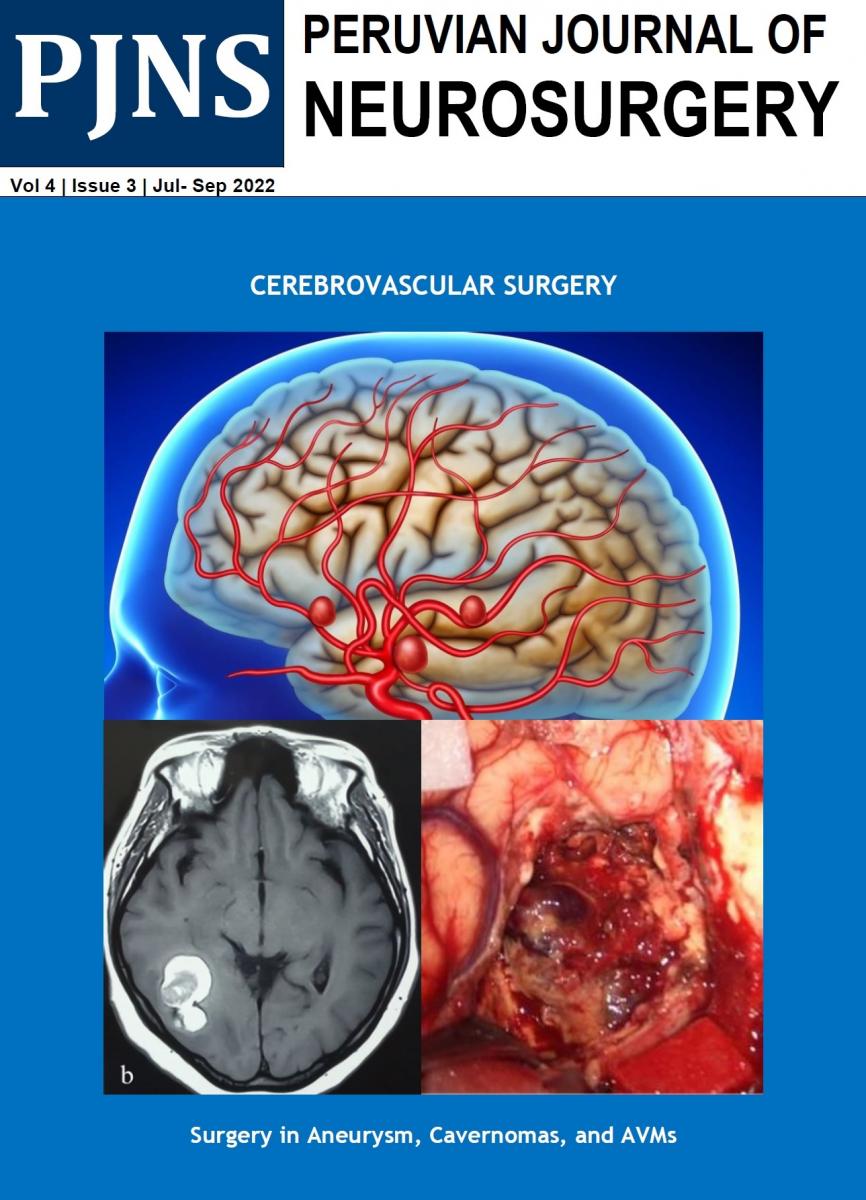Ricardo Zopfi R.MD, Alberto Ramírez E. MD, Mauro Toledo A.MD
Tipo:
Original Article
ABSTRACT (English):
Objetive: The intention of the study was to determine the clinical and epidemiological characteristics of the patients with TCE in minors of 18 years attended in 2 hospitals of reference of Lima.
Patients and Methods: There was realized a descriptive retrospective study of 2506 patients hospitalized in 2 centers of paediatric neurosurgery: The Health National Institute of the Child and the Hospital of Paediatric Emergencies, during the year 1998 to 2002. The charts were checked and the information was grouped according to epidemiological variables as well as the characteristics of the patients with serious brain traumatic injury (TBI)
Results: It was found a predominance of the masculine sex (61%), the age group more affected was that of 1-4 years (48 %) and the fall (45 %) was one of the most frequent reasons. The symptom mas common was the vomit (61.7 %) and the sign was the cefalohematoma (23.3 %). The CT scan was done in 69 % of the patients and in 44 % of these it was found some craneal or intracraneal injury, being the most frequent diagnoses fractures of vault (30.5 %), cerebral edema (14.9 %) and epidural haematoma (12.1 %). Epidural haematoma of the convexity needed surgery in 61 % and that of posterior pit in 81 %. Acute subdural Haematoma was rare (0.08 %). The mortality in the serious BTI was very high (13 %) being the accident of traffic the most common reason (42 %) and the cerebral contusion (58.3 %) the injury most associated with mortality.
Conclusions: The BTI in the paediatric patient has special characteristic clinical and epidemiological that separate it from the adult, characteristics that must be taken in bill for the implementation of a suitable plan of attention in emergency, improvement of the reference system and of promotional preventive measurements with the purpose of decrese the morbimortalidad.
Key words: Craneal trauma in children, epidural haematoma, skull fracture
ABSTRACT (Spanish):
Objetivo: El propósito del estudio fue determinar las características clínico epidemiológicas de los pacientes con TEC en menores de 18 años atendidos en 2 hospitales de referencia de Lima.
Pacientes y Métodos: Se realizó un estudio descriptivo retrospectivo de 2506 pacientes hospitalizados en 2 centros de neurocirugía pediátrica: El Instituto Nacional de Salud del Niño y el Hospital de Emergencias Pediátricas, durante los años 1998 al 2002. Se revisaron las historias clínicas y se agruparon los datos según variables epidemiológicas así como las características de los pacientes con TEC grave.
Resultados: Se encontró un predominio del sexo masculino (61%), el grupo etáreo más afectado fue el de 1-4 años (48%) y la caída (45%) fue una de las causas más frecuentes. El síntoma mas común fue el vómito (61.7%) y el signo más frecuente el cefalohematoma (23.3%). La TAC cerebral se realizó en el 69% de los pacientes y en el 44% de éstos se encontró alguna lesión craneal o intracraneal, siendo los diagnósticos más frecuentes fractura de bóveda (30.5%), edema cerebral (14.9%) y hematoma epidural (12.1%). El hematoma epidural de la convexidad requirió cirugía en el 61% y el de fosa posterior en el 81%. El hematoma subdural agudo fue raro (0.08%). La mortalidad en el TEC grave fue mucho mayor (13%) siendo el accidente de tránsito la causa más común (42%) y la contusión cerebral (58.3%) la lesión más asociada a mortalidad.
Conclusiones: El TEC en el paciente pediátrico tiene características clínicas y epidemiológicas particulares que lo diferencian del adulto, características que deben ser tomadas en cuenta para la implementación de un adecuado plan de atención en emergencia, mejora del sistema de referencia y de medidas preventivo promocionales con la finalidad de disminuír la morbimortalidad.
Palabras clave: Trauma craneal en niños, hematoma epidural, fractura de cráneo


